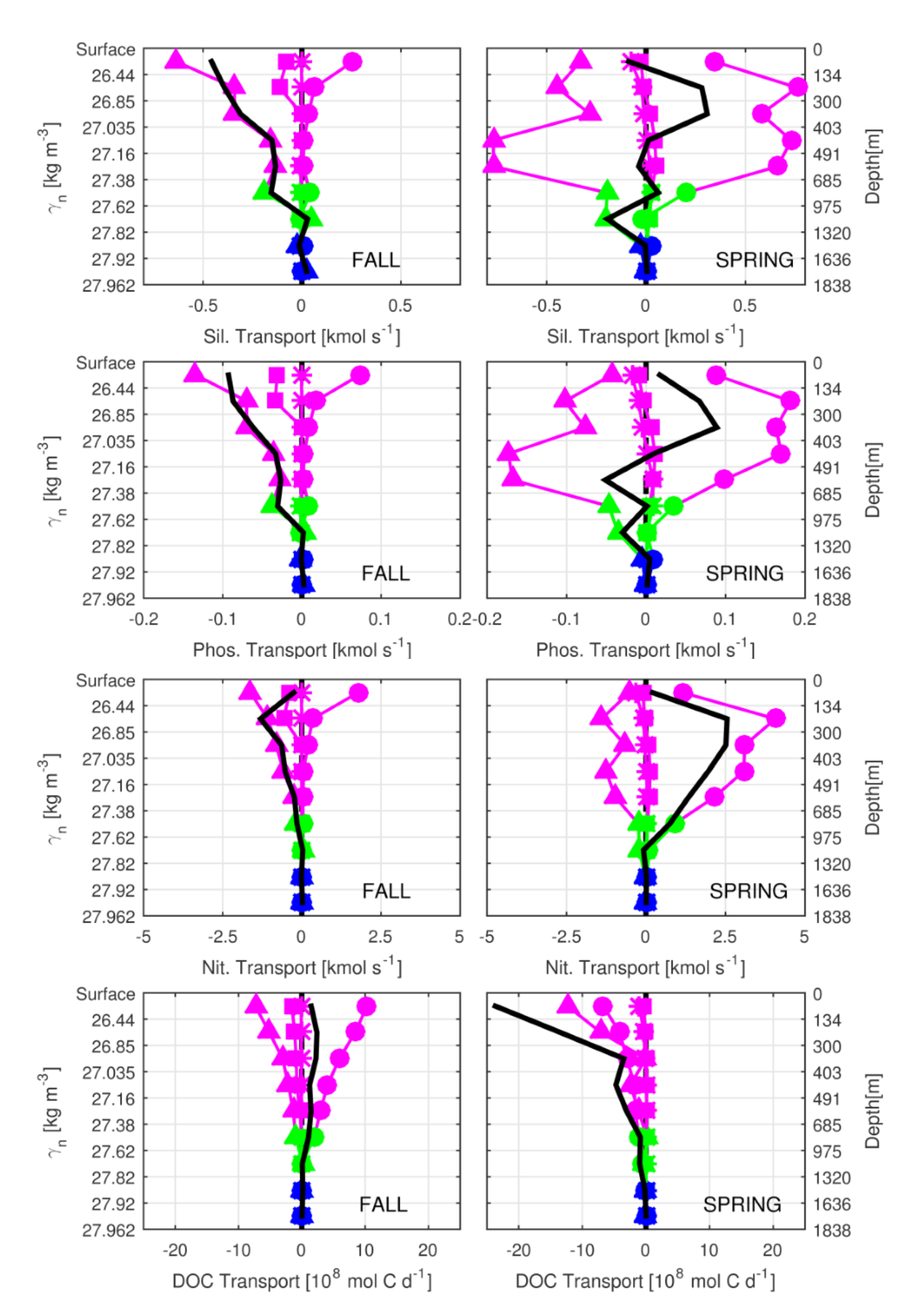Nadia Burgoa Gregorio (Ph.D. student) "Mass, nutrients and DOC transports in Canary Basin"
The circulation patterns in the southeast of the North Atlantic Subtropical Gyre are examined by applying an inverse model to two hydrographic datasets from the COCA Project carried out in fall of 2002 and spring of 2003. The aim is to estimate mass transports consistent with the thermal wind equation and with the conservation of mass in a closed volume. The Ekman 5 transport and the freshwater flux on the sea surface are also considered in the model. The mass transport estimates show a seasonal variability in the circulation patterns at central levels, particularly in the southern boundary of the domain, where the Cape Verd Frontal Zone is located. The main transport at central levels change its direction and mean depth in the southeastern limit of NASG from the first cruise to the second one. In the beginning of the fall, this circulation is deeper and northward and, in the late spring, it is shallower and southward. In the intermediate circulation of 10 all the studied area important differences are also observed between the two cruises. In the first one, the Antarctic Intermediate Waters AAIW reaches higher latitudes notoriously. In addition, the study on the changes in the circulation patterns between the two seasons has allowed understand the season variabilities observed in the contributions of silicates, nitrates plus nitrites, phosphates and dissolved organic carbon, DOC, in our domain during both cruises. It has been analyzed that the upwelling process is the key in the nutrients supply and that a 15 weak stratification allows significant deeper transports of nutrients. It has been also observed that in the late spring, there is a more intensified DOC transport in the shallower layers.
